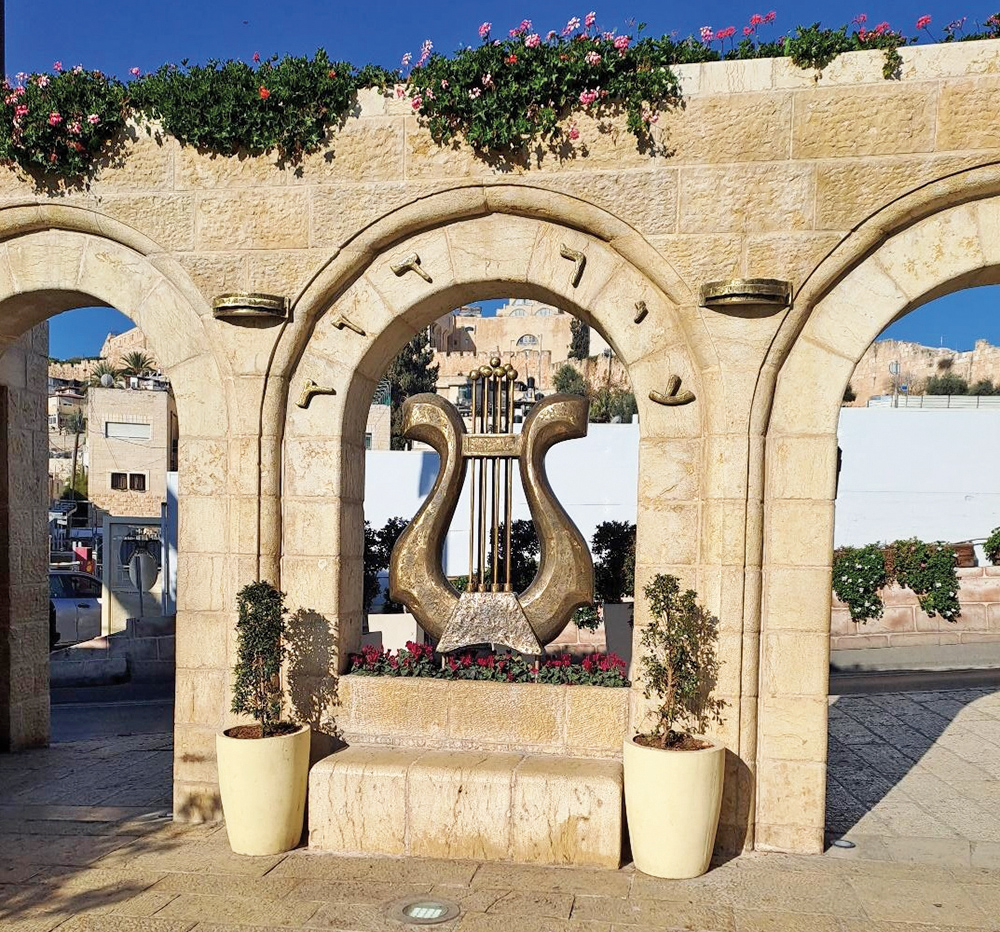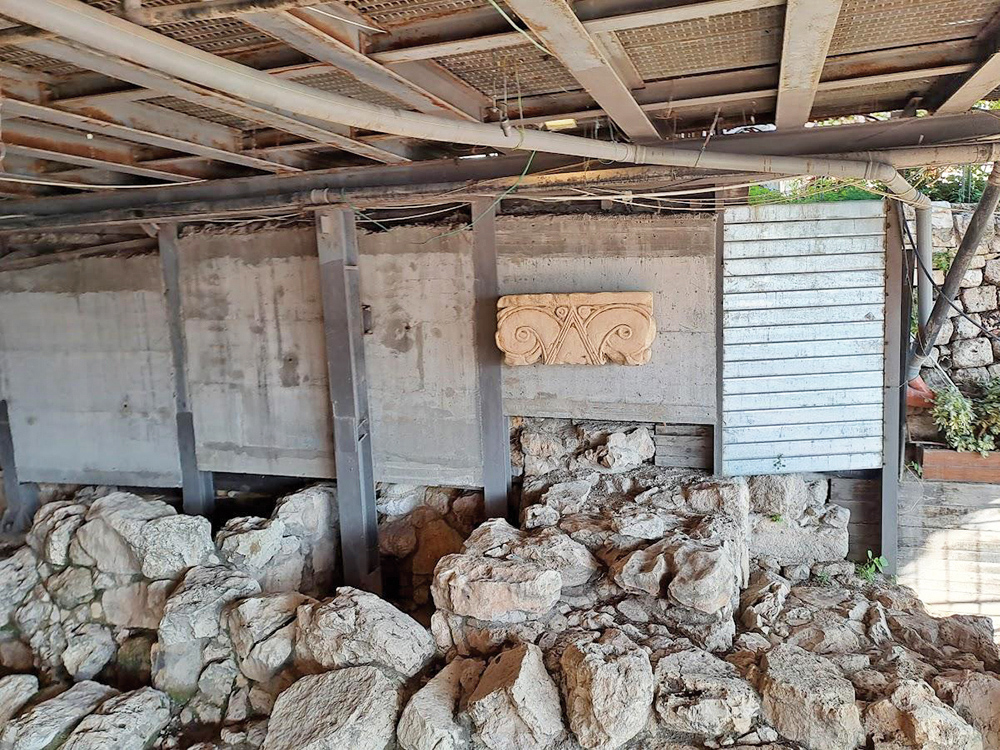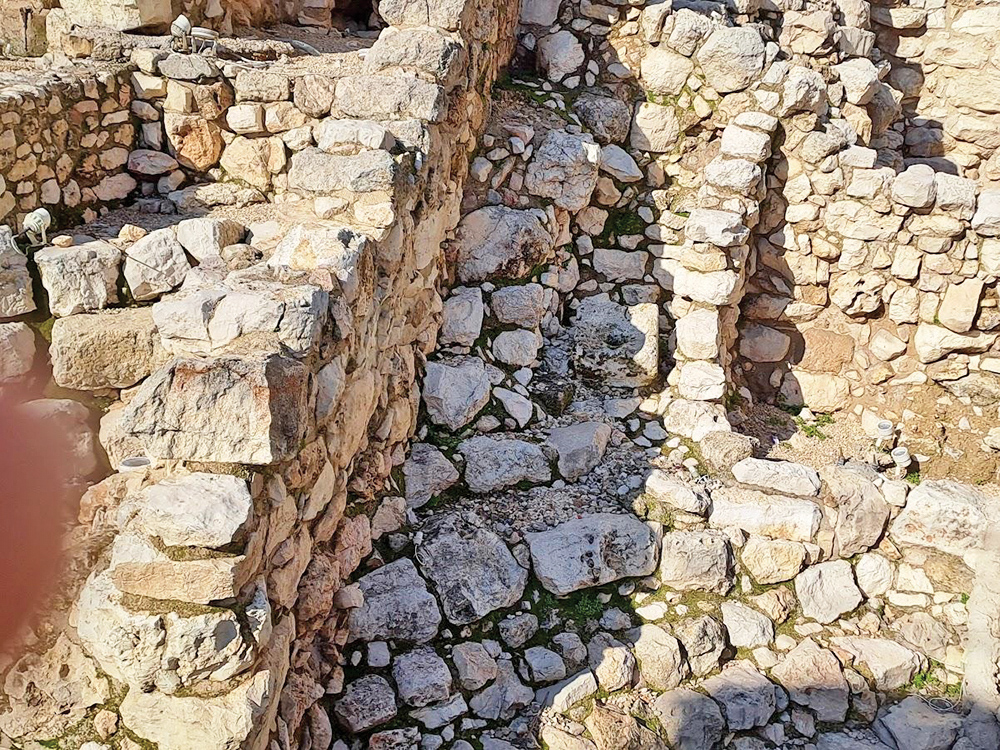(Some of the information for this article is taken from מגלים את עיר דוד by Aharon Horovitz.)
A most special place to visit in Yerushalayim is the City of David, Ir David. It’s almost like entering a time machine and going back to the days of the first Beit Hamikdash!

Many visitors to Yerushalayim enter the old city walls and believe they are in the midst of ancient history. Actually though, the current old city walls were built by Ottoman Sultan Suleiman the Magnificent a little over 500 years ago. Archeologists believe that the ancient city of Yerushalayim was actually south of the current city in what is currently called “Ir David.”
So let’s go down some steps where we will see the remains of a monumental structure. The walls are about 21-feet wide. It is clear this is not some common dwelling. This impressive structure must have served royalty. Pottery found here is dated to the 10th century BCE which is what led archeologist Eilat Mazar to posit that we are standing in none other than the palace of David HaMelech.
On display in the palace is a Phonecian capital which was found in excavations nearby. As guides, we used to quote the verse in sefer Shmuel which describes how Hiram the king of Tyre sent builders and stonemasons to help David HaMelech build his palace (שמואל ב ה: י”א). That would perfectly explain why a Phoenecian capital would be found here. (I’ll be honest though. In a recent tour with Dr. Eyal Meron, a well-known archeologist, I was disappointed to hear that the capital had been dated to a later era than the time of David HaMelech.)

This palace did not fall into disuse after the reign of David HaMelech. Although Shlomo HaMelech built his palace farther north, this monumental structure served some government purpose. How do we know? We’ve found here the bullae (signet seals) of Gedaliah ben Pashchur and Yehuchal ben Shelemayahu. Who were they? They are mentioned in sefer Yirmiyahu as the opponents of Yirmayahu HaNavi who were involved in having him cast into a pit (ירמהו ל”ח). It’s incredible to discover the seal of these people mentioned in the Navi almost 3,000 years later!
Let’s leave the palace now and go down the steps to see the remains of a home from the time of the first Beit Hamikdash. In front of us is a typical four-room home. It’s fascinating that in all Jewish areas excavated from the time of the first Beit Hamikdash, homes were built in this style. In non-Jewish areas nearby, such as where the Plishtim lived, homes were not built in this style.

Now the home in front of us is dated to the end of the first Beit Hamikdash, right before the Churban. We call it Achiel’s home because many clay artifacts found here bear the name “Achiel” on it. We don’t know who Achiel was, but we do know that he must have been a wealthy man for at least two reasons. First, this home is located on prime real estate, right outside of government edifices. Second, he was privileged to have a small room right next to his home which housed a stone seat that is empty on the inside. What could that be? You’re right. It’s an ancient toilet! There was no indoor plumbing then, but a wealthy man like Achiel was able to build an absorption pit with a seat on top of it — the lap of luxury. Archeologists actually brought specimens found here to a lab and discovered that the last person who used this toilet must have eaten vegetables and raw meat. Now, why would someone eat raw meat? Perhaps it’s right before the destruction of the first Beit Hamikdash and the Jews living here did not want the Babylonian soldiers to see a fire burning. Or, was all of the wood used for the war effort and there was none left with which to cook? This looks like a live example of the dire straits of Yerushalayim on the eve of the destruction of the first BeiT Hamikdash.
Another exciting discovery found around here is the signet seal (bullae)) of Gemaryahu ben Shafan. Yirmiyahu chapter 36 identifies Gemaryahu ben Shafan as the scribe in whose office the words of Yirmiyahu predicting the Churban (Megillat Eicha) were read aloud before they were ultimately taken to the king and burned. What was it like to be standing here on the eve of the destruction of the Beit Hamikdash and hear such a prediction? What would our world look like today if the admonitions of Yirmiyahu had been taken seriously?

But alas, both the Beis Hamikdash and the city of Yerushalayim were set aflame by the Babylonians in 586 BCE. Here, we have discovered a layer of fire and ash dated exactly to that time. Yerushalayim was destroyed by fire and will be rebuilt by fire (Nachem, Tisha B’Av Mincha). May we merit to see it rebuilt speedily in our days!
Hava Preil is an enthusiastic licensed Israeli tour guide. She grew up on the Upper West Side of Manhattan and holds an M.A. in Judaic studies. Preil has developed and taught accredited courses in Tanach and Jewish ethics for Naaleh/Woodmont College and Cybersem. She currently lives in Givat Ze’ev in Israel with her family. Preil can be reached at 054-844-1579, (845) 391-0438 or at havapreil@gmail.com








